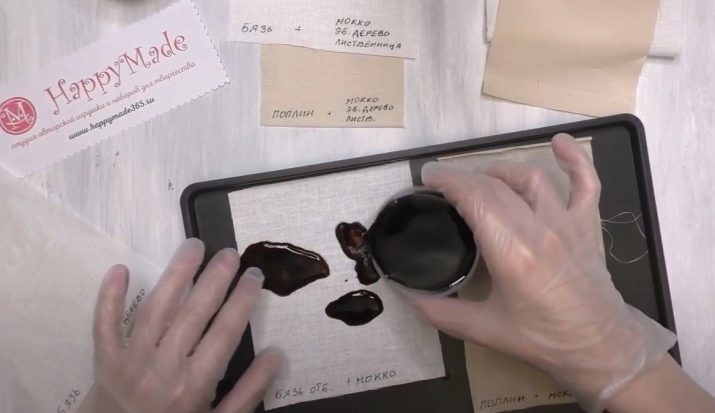Review of fabrics for dolls
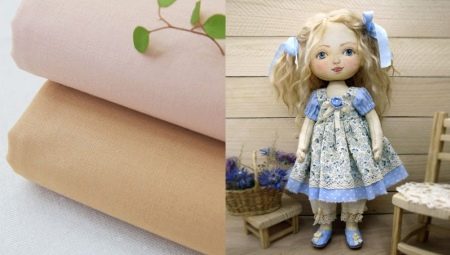
Each puppeteer will be interested in learning how to choose fabrics for dolls, what doll clothes are made of, what materials are suitable for a textile body. You should know how to age the fabric, what are the nuances of toning.
Body materials
There are quite a few fabrics that can be used to create an interesting homemade doll or toy.
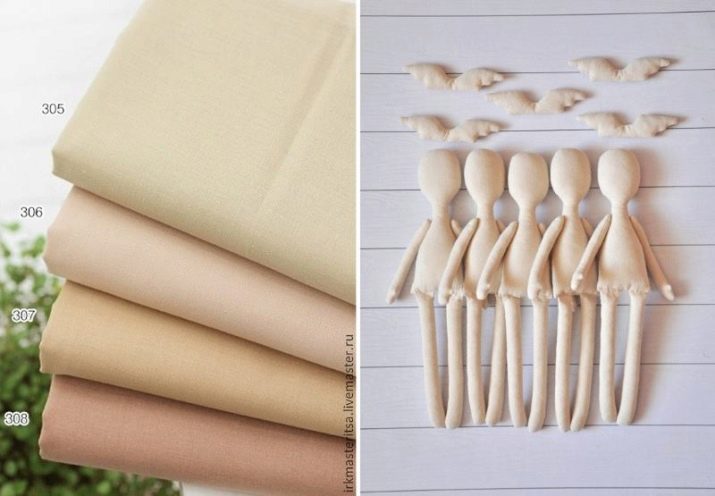
Linen
This natural material is well suited for sewing the doll's body. The main thing is that the material is dense enough, the doll should not creep at the seams. And also it is worth choosing the minimally rigid version, draped. We must look at the interweaving of the threads. The more unevenly they are located, the rougher the toy looks. This is good for the so-called attic doll. But for a model like Tilda, smooth matter is needed.

However, the density should be in moderation, otherwise it will be difficult to turn the product out or stuff the parts. Linen, which has a high density, will be good for sewing, for example, hare toys. Another obligatory quality is that the fabric should either not wrinkle or be ironed well so that after turning out the parts it does not seem too wrinkled.
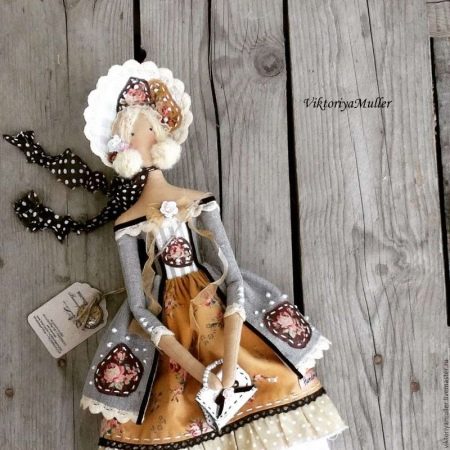
Cotton
It's also worth looking at the structure. Too sparse weaving is not suitable, since through it you will see what is inside the doll. Too rough material is also not good. Coarse calico is quite good for these purposes with a suitable color. Batiste can also work if you take a flesh shade, as well as shirt fabric.
Too subtle options can be duplicated.

An interesting option is thin cotton, which is often used for upholstery. But there may be a problem in the selection of color: such fabric is mainly of a milky tone. A flesh tone can be easily achieved by touching up the fabric with, for example, tea. But the material is inexpensive. Of course, American stretch cotton is ideal, its assortment includes all the necessary colors for sewing a doll's body.
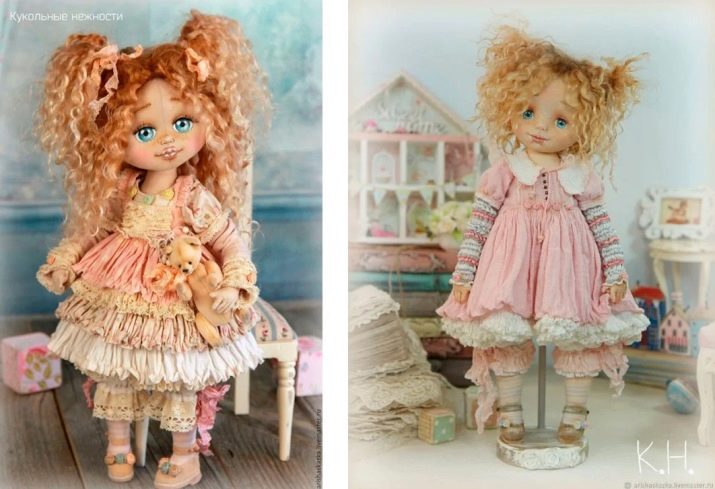
Jersey
When choosing a knitted fabric, it is worth paying attention to a number of factors. So, an important parameter is the density during stretching, the presence or absence of gaps in this case, as well as crease. If possible, it is worth purchasing a special doll jersey material.
Many craftsmen use knitwear to fit doll parts sewn from a different material. Thus, the articular joints are hidden, which gives the puppet model naturalness and mobility.
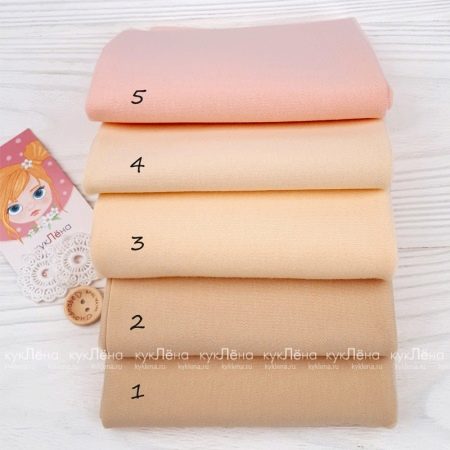
Fleece
This material is more suitable for sewing animal toys or "plump" dolls, if so conceived. It is easy to use and perfect for beginner puppeteers.
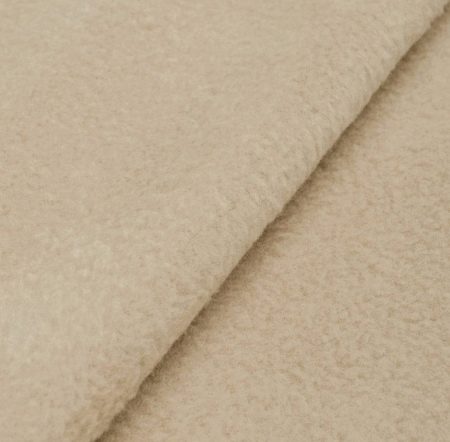
Other
There are other options as well.
- Felt - from this raw material cute flat models of dolls are obtained.
- Suit fabrics - a material of beige or flesh-colored can be ideal for making a doll's body.
- Gabardine Is also a very interesting option. Since it is quite dense and at the same time stretches well, and also has a low price, it is suitable for creating large dolls.

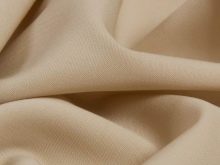

Fabrics for doll clothes
When choosing a fabric for a dress for a doll, a number of criteria must be taken into account.
- The fabric, first of all, must be elastic and soft. It is difficult to sew a tiny piece of dense material. The material should look natural on the doll, should not be staked and disfigure the toy. Usually these are fabrics such as cotton, silk, chintz, and chiffon or organza are also suitable. The doll's outerwear can be sewn from denser fabrics; denim or felt will do.
- The material must not crumble. After all, the edges of the seams are very small, and the volume created during their processing will be superfluous.
- A drawing on matter is needed rather small, that is, commensurate with the doll itself. The print should look organic in the product.
- The fabric should not be dyed. The stain will be difficult to remove from the doll's body. Therefore, the material must first be washed.
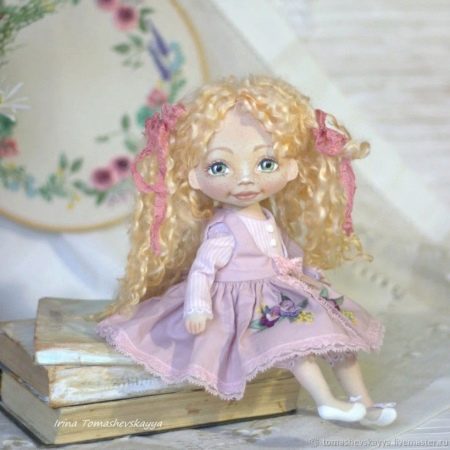
Fabric Tips
To achieve a certain effect, creating, for example, an attic doll, aging of matter is necessary. This is achieved by 3 main methods.
Mechanical impact
There are several ways to slightly damage the integrity of the material. For example, with pumice, sand, sandpaper, just rub it vigorously. In this case, only the seams, knees, elbows, the hem of the dress, the bottom of the suit can be processed. Of course, this is the most brutal method of aging the material, but also the most effective.

Heat treatment
There are also several options. You can boil the fabric in boiling water, burn the edges of the products with a lighter, bake for a long time in the oven, and so on. In principle, the aging process of all objects consists in their decay. Heat treatment will help speed it up. However, in contrast to mechanical stress, when exposed to temperature, the entire tissue ages, and not only part of the upper layers.
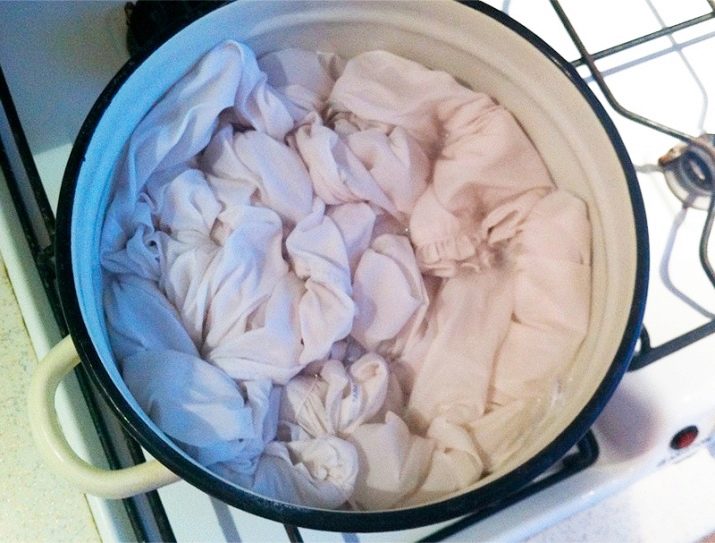
Dyeing / whitening
Dyeing or, conversely, color removal is the most gentle method of aging fabric. A touch of antiquity can be given with natural dyes, as well as light tones. It is better if the staining is done by hand. It can be done with a brush or immersed in the solution.
As for color removal, this can be done by washing with bleach, and the cheaper the preparation, the more efficiently it will deal with the color.
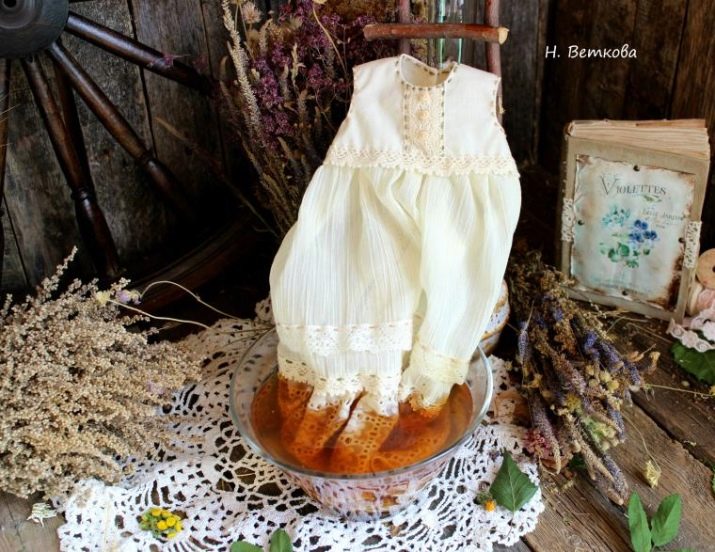
You can also tint the fabric with paints. Tinting with watercolors, tempera, acrylic, special paints on fabric is often used. You can experiment with products such as different varieties, coffee (instant or brewed), tea, because even different brands of tea give different effects. It is better to age not the fabric, but the finished dress - the color at the seams will be slightly darker, and the overall look will be more realistic.
